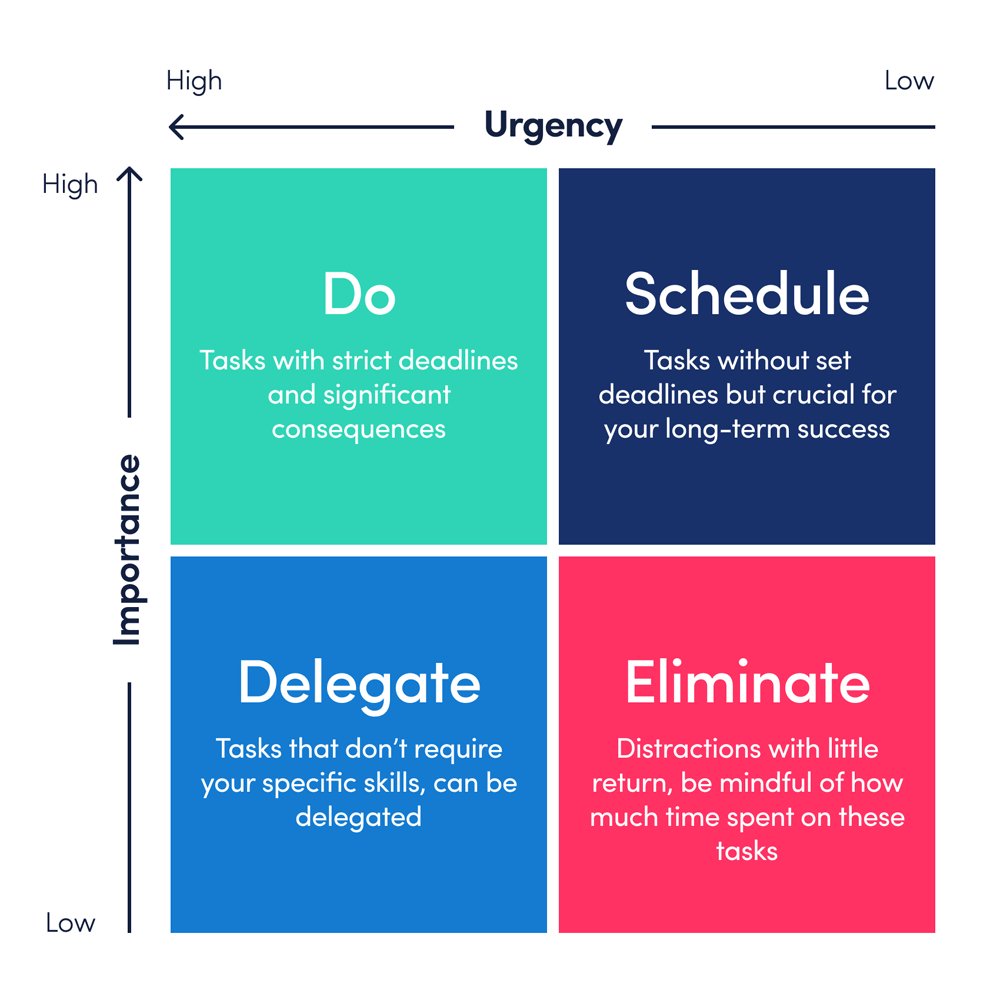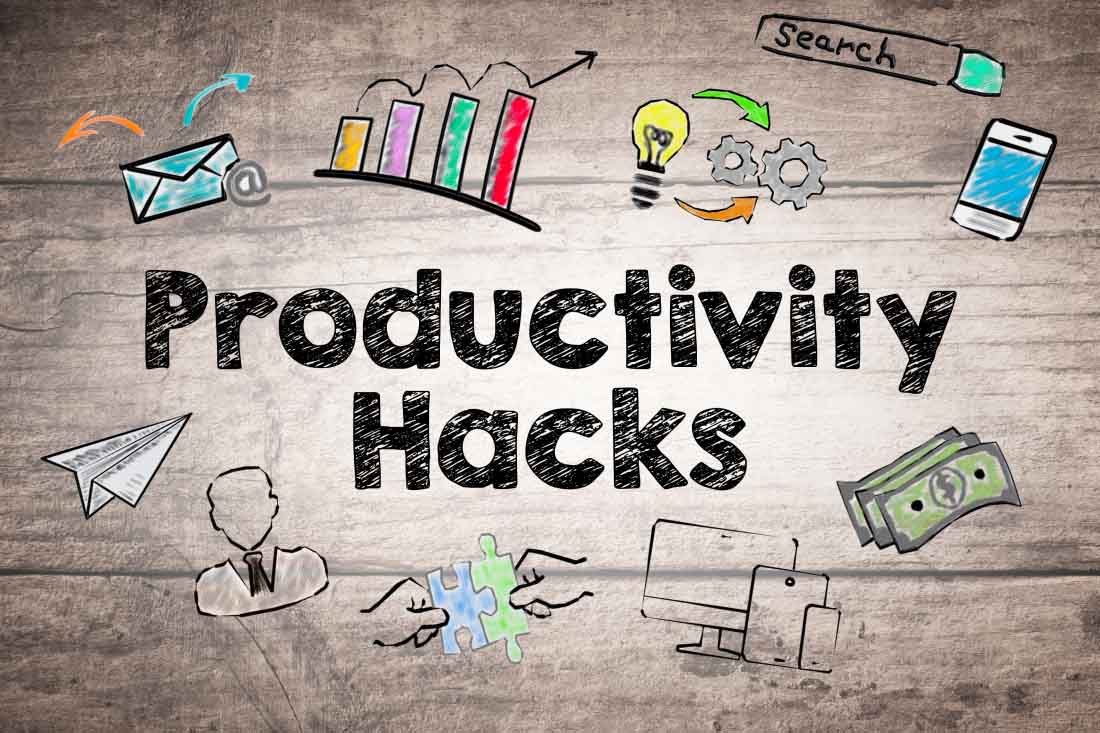In today's ultra-competitive business landscape, maximizing employee productivity is crucial. But often, it’s hard to know how to support it as a manager. To help, let’s explore our favorite productivity hacks for work to help enhance employee performance and foster a more positive work environment.
What is productivity?
Productivity compares how long (and how many resources) it takes for employees to complete tasks and projects. It goes beyond checklists and to do’s to measure performance. Instead of looking strictly at the number of hours worked, productivity factors in quality.
The importance of employee productivity
Studies show companies with highly engaged, productive employees experience higher profits and better retention. The higher the productivity level, the more growth and innovation. And because it takes fewer resources to get more done, highly productive companies also have lower operational expenses. Most importantly, when employees feel valued and equipped with the right resources they’re more likely to perform at their best.
10 productivity hacks for work that managers should try
Think it’s up to every individual to learn how to be as productive as possible? Think again. As a manager, you have a lot to gain by applying proven productivity techniques when leading your team. Here are ten of the simplest and easiest productivity hacks for work:
1. Use productivity management software
Do you use software to monitor productivity? If not, there’s a compelling reason to do so. More than 90% of surveyed employees are OK with employers collecting data on them and their work if it helps improve performance. In fact, more than 60% would exchange their work-related data for more customized learning and development opportunities.
Productivity management software collects and analyzes employee data for you, making it easy to understand where, when and how your people work best. It shows you when some team members are carrying too much of the workload, if anyone’s at risk of burnout and how much time people spend on busywork versus focus time. This allows you to identify when people need your support so they can be as productive as possible.
2. Teach the Pomodoro Technique
In his book Go Wild, Harvard Psychiatry professor John J. Ratey explains a phenomenon that flies in the face of hustle culture archetypes. Researchers found that, rather than thriving on five hours of sleep, exhausted people work long days because they do everything twice. They have to, because sleep loss makes them work inefficiently.
To perform well, people need rest — and not just in the form of sleep. Regular brain breaks throughout the workday are equally important, which is why it’s a good idea to encourage your employees to use the Pomodoro Technique.
With this strategy, you boost productivity by setting a timer. For 25 minutes, focus on a single task. Then take a five-minute break and repeat the process. The first three sessions are followed by a five-minute break, and the fourth by a 30-minute break. This method is a great one for employees who have a hard time focusing, since they know they only need to do it in shorter bursts.
3. Use the 2-minute rule
Employees with brimming to-do lists don’t feel in control — they’re overwhelmed. More than 90% of surveyed employees say stuffed to-do lists cause stress and 52% worry about letting down others.
Thankfully, there’s an easy productivity hack that combats this common habit. It’s called the 2-minute rule.
With this time management technique, you encourage employees to complete tasks that take less than two minutes right away instead of postponing them. If you can do it in 2 minutes, do it immediately. Otherwise, schedule it for later. This rule is based on the idea that taking action on small tasks prevents them from adding up and cluttering schedules.
It’s also helpful for tasks that seem daunting. For example, encourage employees to try committing to a difficult assignment for two minutes. They’ll either make a little headway or end up sticking at it for longer. Either way, it creates a small win. And according to the Harvard Business Review, small wins are highly motivating.
4. Encourage use of the Ivy Lee Method
It’s not always an overstuffed to do list that’s the problem. The always-on digital nature of modern work also makes it hard to stay on task. While technology makes many jobs easier, scientists say too much technology is a source of overload, distraction, stress and exhaustion.
To help, encourage your employees to use the Ivy lee Method. This 100-year-old method improves productivity by reducing decision fatigue. At the end of the work day, write down the six most important tasks you need to accomplish the following day in order of importance. Then start the next morning by completing them one at a time. This method ensures employees know exactly what to work on for the rest of the day — they focus on meaningful work instead of exhausting decision making. At the end of the day, move any leftovers to the next day’s list.
5. Apply the Eisenhower Matrix to project planning
Do you struggle when managing team projects? If so, you’re far from alone. A Smartsheet survey of 8,000 workers found 91% say their organization faces project management challenges. Of those, 85% are overwhelmed by project pace and deadline.
Applying the Eisenhower Matrix allows you to bring clarity to a long list of responsibilities. To use it, divide assignments into four quadrants:
- Tasks with critical deadlines (important and urgent)
- Tasks with unclear deadlines that impact success (important but not urgent)
- Tasks that must get done but don’t require special skills (unimportant but urgent)
- Time wasters and unnecessary tasks (unimportant and not urgent)

Use your list to prioritize critical tasks, schedule tasks with unclear deadlines, delegate or automate unskilled tasks and remove the unnecessaries.
6. Reimagine the work day
Do you still require all team members to report at set, specific times? If so, you may want to rethink that arrangement. Various studies suggest productivity peaks at different times for different people. One behavioral scientist says it happens within the first two hours of waking. Another study is more specific, listing the hours of 9 to 11 am, while other researchers say early afternoon is the best time to focus.
While the findings may not be conclusive yet, there is a way to accommodate your employees’ need to work when they’re most efficient. Offer flexible work arrangements. Employees have long reported getting more done when they have control over where and when to work. And it’s not just hybrid and remote work that does the job. For example, when companies experiment with the four-day workweek many discover it leads to lower burnout, greater productivity and higher retention.
7. Support focus time
Do you ever wonder how much time your employees spend on social media and messaging apps? According to research, it’s a lot. The average worker spends more than 2.5 hours on platforms like Instagram and TikTok. Every. Single. Day. They also spend 3+ hours on Slack. And that doesn’t even factor in the time that goes to unnecessary meetings and phone calls.
The solution? Protect your employees’ focus time. These dedicated blocks of time allow workers to focus solely on one important task or project. And the amount of time employees stay focused is directly related to how much they produce. Tracking and improving focus time is an excellent way to help employees get more done in less time.
8. Minimize interruptions
How often do you ask team members to hop on a quick call or join an in-progress meeting that’s not already on their schedule? This habit may seem harmless but in reality has major implications for productivity. It takes an average of 23 minutes and 15 seconds to get back on track after an interruption. With most workers facing ten to 20 interruptions a day — texts, group chats, emails, conversations — it adds up to a lot of time. Rather than encouraging employees to avoid multitasking it drives them toward it, which eats up even more productive hours.
As a manager, it’s your job to help your team manage distractions. Make it OK to block calendars, use virtual “do not disturb” signs and check email periodically rather than constantly. Since you set the tone, your people will look to you when determining how to take back their time.
9. Try the Kanban approach
Do your employees struggle to meet deadlines? According to some researchers, they might be dealing with "planning fallacy." This refers to the tendency to underestimate how much time a task will take. Others say an overall lack of deadline structure causes workers to lose 1-2 hours of productivity today. Either way, clear timelines and expectations are important.
One way to keep everyone on track is the Kanban system. This method is based on a Japanese word that means “visual card.” Here’s how it works: You use Kanban board software to create a card for each task. Then arrange those cards into columns — one for "in progress," another for "in review," a third for "done" and so on. Employees move cards as they complete tasks, making it easy to see and understand progress in real time.
10. Set the stage for happiness and well-being
Here’s a surprising finding about our final productivity hack for work: According to an extensive study at Oxford University's Saïd Business School, workers are 13% more productive when they’re happy. They work faster, complete more tasks per hour and, in this case, convert more calls to sales.
While you can’t give employees happiness, you can create the right environment for it. Support well-being by watching for signs of burnout and setting an example of what it means to have healthy work-life balance. In addition, take time to arrange team-building activities — group lunches and occasional after-hours events go a long way in building camaraderie.
Looking for ways to boost employee productivity at your organization?
ActivTrak is here to help. Our productivity management software provides deep insights into how work gets done within your organization. It collects and analyzes real-time, on-the-job employee data to show you how your people work and what they need to thrive. These insights serve as the basis for data-driven decisions at more than 9,500 organizations, guiding everything from hybrid work policies and well-being programs to day-to-day team leadership decisions.
Sign up to try it free today. For tips and tricks you can use to improve employee performance within your team, schedule a demo.


